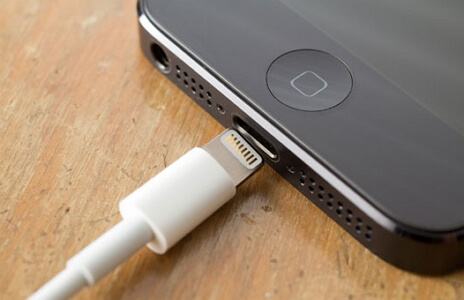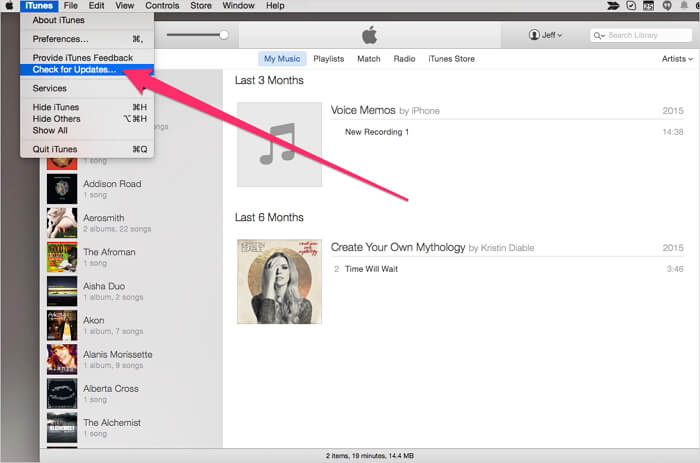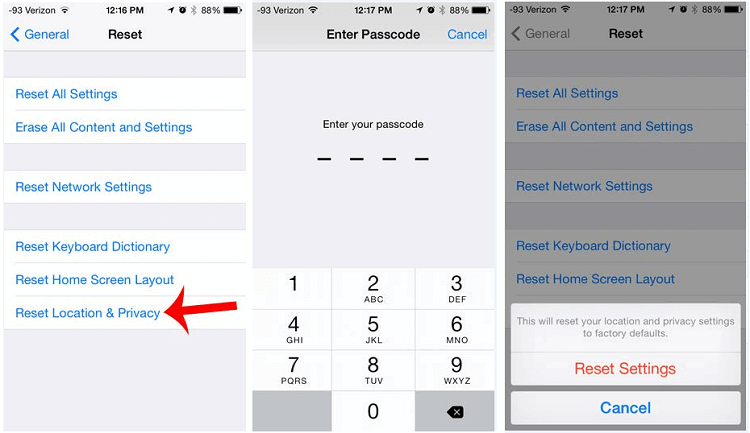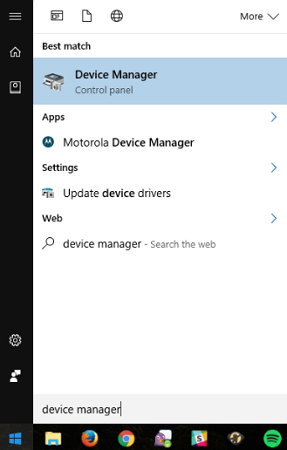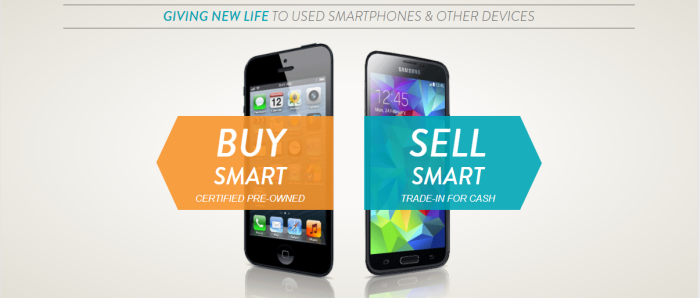Top 6 Data Loss Causes and Top 10 Preventions 2019
Data Loss Causes
While data loss may seem unavoidable, with the proper precautions and safeguards in place, it can be prevented. The first step is to understand the primary causes and warning signs for potential data loss. Knowledge is power. Once you have this insight, the next step is learning the top tips for prevention. With this knowledge, you should be able to take the necessary steps to prevent data loss from happening in the first place.
Recommend: With
Gihosoft Free Android Data Recovery Software, you are no longer afraid of data loss!

Recognizing the Leading Causes for Data Loss
Here are the top 6 causes of data loss:
1) Hard drive failures
Hard drives fail every day for a variety of reasons. In the US alone, 140,000 hard drives crash each and every week. About 60% of hard drive failures occur due to a mechanical failure, while the other 40% are a result of misuse. A hard disk is a mechanical device with moving parts and thus prone to failure. While some failures occur simply because the hardware becomes worn out, others fail prematurely due to external factors like:You may also like:
Jihosoft iTunes Backup Extractor
Overheating
Water or fire damage
Exposure to magnetic fields
Power outages or surges
Impact due to being dropped
There are also internal factors that can cause a failure in the actual file system itself that results in a hard drive failure. These internal failures can be a result of:You may also like:
online youtube downloader
File corruption
Software corruption
Drive read instability, which prevents access to the data on the disk
Human error:
Tampering with the file system
Accidental deletions of imperative files
Improper installation and removal of files
Improper drive formatting/partitioning
Sometimes, hard drive failures are caused by a single pinpointed catastrophic event, while other times they fail slowly over time. Here are some of the signs of a failing hard drive:
Repetitive hard drive crashes
Clicking, grinding or screeching noises in a cyclical pattern
Rising number of bad sectors during chkdsk scans
Unusually hot computer temperatures
Issues during the boot-up process
Increasingly slow computer performance during standard processes
Repetitive computer freezes requiring a hard reboot
Files that fail to open, are corrupted or suddenly disappear
Don’t wait until you see the signs of a failing hard drive to back up your data. Get backup software like NovaBACKUP in place that will back up your computer for you in an automated fashion. You should also consider creating an image backup to prepare for disaster recovery scenarios where you want to recover your entire system, including your operating system and your applications rather than just your files.
2) Accidental deletions (user error)
Every day we create, update, save and delete files. It is just part of our everyday business life. It’s no wonder that sometimes, we delete files or overwrite files by accident. We are all human, and the reality is we make mistakes. Sometime the Windows Recycle Bin can offer a safety net, but there are several scenarios when you simply cannot count on the Recycle Bin to come to the rescue. Here are a few situations in which the Recycle Bin may be bypassed:
Files deleted from drives, like those accessed over a Network, which don’t have a Recycle Bin
Files that are larger than the capacity of the drive that the recycle folder resides on
Files that are permanently deleted using Shift + Delete
Files deleted using the Windows Command Prompt
Another common source of accidental deletions is email. According to a survey of over 200 Ontrack®PowerControls™ customers, a leading mailbox recovery software solution, over 60% of users reported receiving up to 5 email restorations requests per month. Restoring an entire Exchange Server from a backup is a time consuming process. With software like
NovaBACKUP Business Essentials, which includes single mailbox restore, you can restore just the emails or mailboxes you need.
The last type of accidental deletions come as a result of users deleting system files that are critical to the proper functioning of the entire computer. No matter what type of accidental deletion occurs, having the proper backup in place could save your bacon.
3) Computer viruses and malware infections
There are new viruses that pop up every day that put your data at risk. According to a B2B international survey, 35% of IT specialists reported that their companies had lost data due to malware infection.
While being connected to the internet has its benefits, it also comes at a cost. The most common means of entry into your computer is through email-based attacks (21%), the second is through
phishing (17%). Computer viruses are a very real threat. They have the ability to destroy, steal or encrypt your data, and in some cases completely corrupt the hardware of your computer or infiltrate your entire network.
Some of the more recent viruses, known as crypto-ransomware are responsible for earning hackers millions of dollars by holder users data for ransom. As these users face the potential reality of data loss, many are opting to pay the ransom over losing their data.
Cryptowall has cost US businesses and consumers $18 million in just over a year (April 2014 to June 2015) according to the FBI’s Internet Crime Complaint Center.
With the latest variant
Cryptowall 3.0 now spreading like a wildfire, it wouldn’t surprise me to see that number double or even triple over the next year. Much like its predecessors Cryptolocker, these viruses encrypt victim’s data, rendering it useless without a decryption key, which of course is offered for a fee. If these victims had a proper backup in place and stopped paying up, these criminals would not keep coming up with new forms of the virus. As long as we keep paying, they will keep building new variations of these dangerous and costly forms of ransomware.
Once again, if you had a properly backup in place, and you became a victim of any of these strains of crypto-ransomware, you could simply restore your files from your backup rather than lining the pockets of these hacker thieves that are banking on the fact that many users do not.
4) Laptop theft
The statistics on laptop theft are astounding. According to Gartner, a laptop is stolen every 53 seconds. If you think it won’t happen to you, chances are you’re wrong. Be ultra cautious and don’t ever leave your laptop unintended. Think of it this way. Would you leave a stack of hundred dollar bills on a table unattended even for a second? Then don’t leave your laptop unattended. If you have to leave your laptop in your vehicle, make sure it is not visible. Crime is often opportunistic. Smash and grab crimes are often prompted by the thief seeing something of value in plain view. While you might think that the cost of replacing the stolen laptop is costly, studies reveal that 80% of the cost is actually a result of the data breach.
Full-disk encryption or the ability to wipe a computer remotely for laptops that contain critical and confidential data is paramount to protecting your business from a data breach. Having a proper backup in place, will also ensure that you don’t lose that critical data.
5) Power failures
Power outages and power surges are bad for your computer and your data. While you may think that the unexpected loss of power to your computer might pose a relatively low risk, in reality that may not be the case. When there is a power outage or power surge that results in an unexpected shutdown of your computer, it takes its toll on the components of your computer. Operating systems are complex and must follow proper shut-down procedures to make sure all processes run properly. A sudden loss of power can interrupt these delicate procedures rendering your computer inoperable.
Imagine if you will that your hard drive is busily writing data to the disk, when all of a sudden, power is lost and it shuts down right in the middle of its process. On a good day, you may just lose a single file or part of a file. Now imagine if your hard drive was writing to the file system, which is critical for the booting process, and your computer loses power. That file could become corrupt, and now you can’t reboot your computer at all. Not good.
When power outages, surges and hard-reboots happen on a frequent basis, it can reduce the hard dives lifespan. Every time a computer restarts after a sudden loss in power, the read and write head, is quickly reset to its original position causing small imperfections on the disk. These imperfections accumulate over time and increase the likelihood of a head crash, which effectively destroys the hard drive. Again not good.
Power surges also pose a risk to computer hardware. Surge protectors are one way to protect yourself from a power surge. But even a surge protector won’t protect your computer in case of lightening. Losing your computer may be painful, but losing all of the data on your computer would be more painful. Having a good backup, would protect you in the event of a power-related data loss.
6) Damage due to spilled coffee or water
Electronics and liquids do not play well together. When you spill any sort of liquid, whether it be water, coffee or other any other beverage for that matter, you run the risk of short-circuiting your entire computer. When liquid seeps into the laptop through the keyboard, which is connected to the laptops motherboard via a ribbon cable, it can cause the keyboard to stop working altogether. Simply drying off your computer may not be enough.
Follow these instructions to try to
save your laptop from liquid damage. Essentially, you will want to immediately shut down your computer, dry it off, remove all removable parts, make sure they are dry and clean of any residue, and then wait at least 48 hours to ensure that everything is completely dry before you reassemble your computer and hope for the best.
The unfortunate part is that sometimes a spill can go much deeper than just the keyboard, damaging the parts below. When the spilled liquid contains sugar or any acidic ingredients it can cause corrosion, which could eventually destroy the touch pad, the processor, the memory and even the entire motherboard. If you are able to get your computer to start up again after a spill, do yourself a favor and immediately create an image backup of your computer. If the liquid spill causes your device to short out someday in the future, you can at least use that image to get back up and running with a new computer as quickly as possible.
Take Preventative Action to Avoid Data Loss
Here are the top 10 steps you can take now to prevent the agony of data loss later:
Keep your computer clean and dust-free
If your PC gets hot, take it apart and clean it
Save and backup your files regularly, to multiple locations
Create an image backup BEFORE the first signs of hard drive failure
Keep your anti-virus software up to date
Don’t open suspicious emails or attachments
Don’t leave your laptop unattended
Use a surge protector
Don’t delete files you don’t know what are, especially system files
Don’t keep liquids close to your laptop
Should you experience data loss, having a solid backup of your data can help you get your lost data back. If you are not backing up your computer, you need to start now. With a backup software solution like
NovaBACKUP, you can create a file back, an image backup or even just a copy of your files to a secondary device in an automated fashion so you are prepared for any of these data loss scenarios. With so many options for backing up your computer, there is really no reason to leave your data unprotected.
Top 6 Data Loss Causes and Top 10 Preventions 2018
More Tips for You:
No Need to Cry for Accidentally Deleting Files on Android
2 Methods to Recover Deleted Contacts from Samsung Galaxy Phones
How to Recover Deleted and Lost Videos/Music from Android
How to Recover Deleted Data from LG V30/V20/V10/G7/G6/G5
Android SMS Recovery: Recover Deleted Text Messages on Android
How to Recover Deleted Photos from Android Internal Storage

